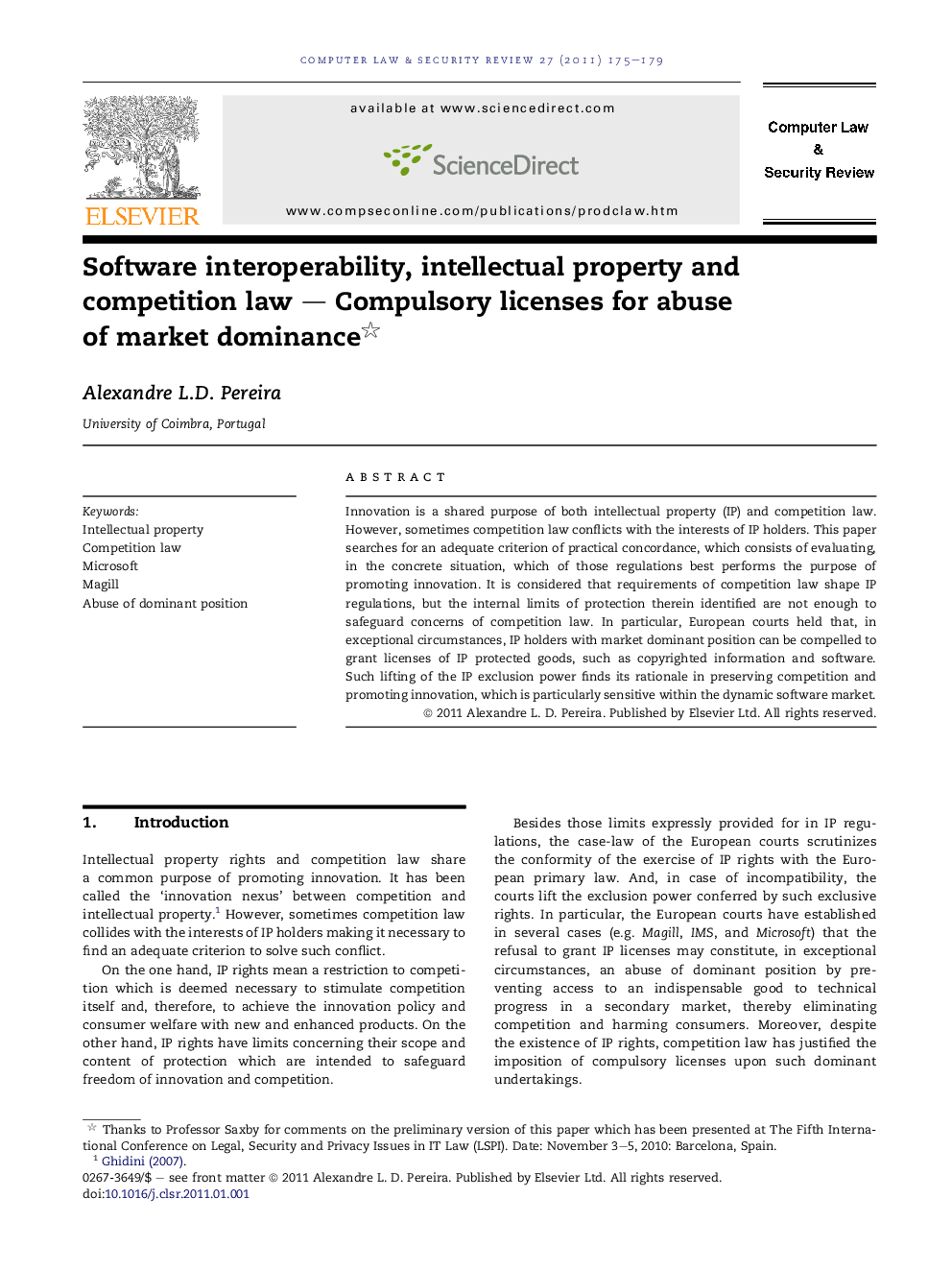| Article ID | Journal | Published Year | Pages | File Type |
|---|---|---|---|---|
| 465548 | Computer Law & Security Review | 2011 | 5 Pages |
Innovation is a shared purpose of both intellectual property (IP) and competition law. However, sometimes competition law conflicts with the interests of IP holders. This paper searches for an adequate criterion of practical concordance, which consists of evaluating, in the concrete situation, which of those regulations best performs the purpose of promoting innovation. It is considered that requirements of competition law shape IP regulations, but the internal limits of protection therein identified are not enough to safeguard concerns of competition law. In particular, European courts held that, in exceptional circumstances, IP holders with market dominant position can be compelled to grant licenses of IP protected goods, such as copyrighted information and software. Such lifting of the IP exclusion power finds its rationale in preserving competition and promoting innovation, which is particularly sensitive within the dynamic software market.
